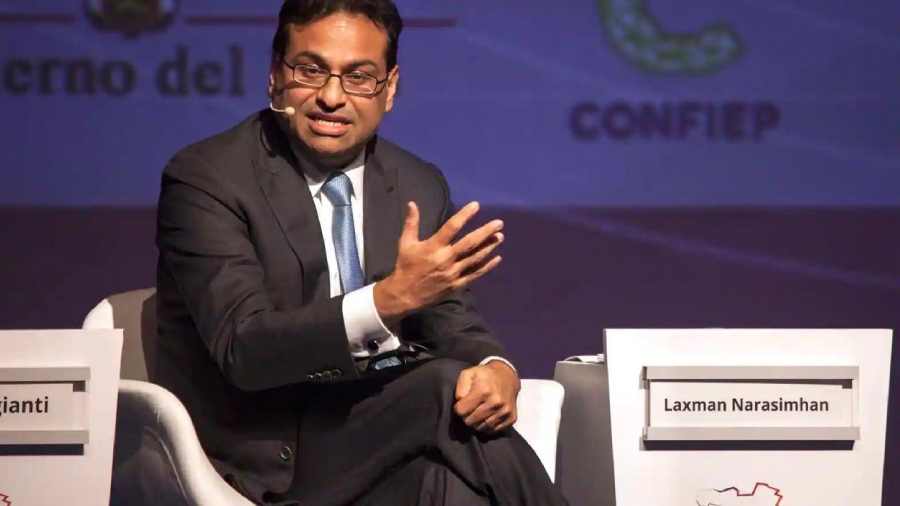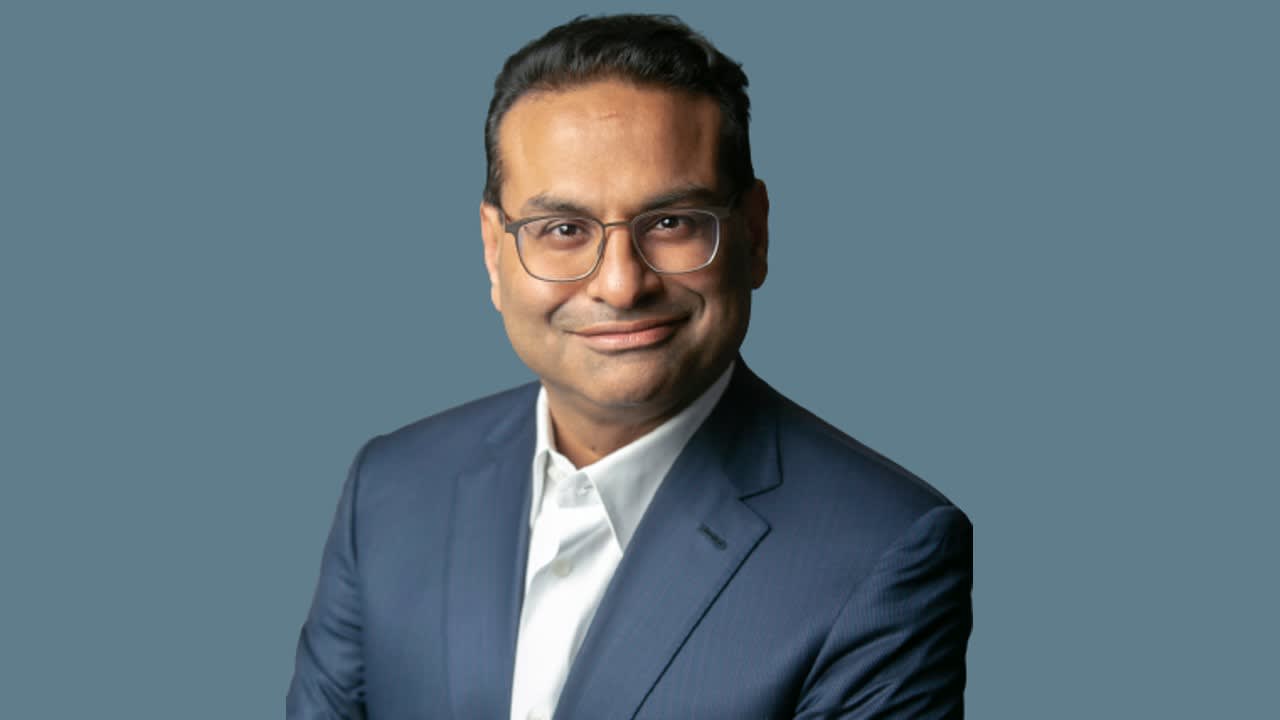Laxman Narasimhan’s Career Trajectory: Ceo Laxman Narasimhan

Laxman Narasimhan’s journey to the helm of Starbucks is a testament to his strategic acumen and leadership capabilities. He has consistently navigated complex business landscapes, demonstrating a knack for driving growth and fostering innovation across diverse industries.
Early Career and PepsiCo
Narasimhan’s career began in the fast-paced world of consumer goods, where he honed his skills in marketing, strategy, and operations. He joined PepsiCo in 1999, marking the beginning of a decade-long tenure that would shape his career trajectory. He held various leadership roles, including Vice President of Marketing for Quaker Foods and Vice President of Global Strategy for the PepsiCo Beverages division.
Key Accomplishments at PepsiCo
Narasimhan’s contributions at PepsiCo were significant, particularly in the areas of brand building, market expansion, and strategic partnerships. He played a pivotal role in the launch of several successful products, including Quaker Chewy Granola Bars and Gatorade G2. He also spearheaded the company’s expansion into emerging markets, demonstrating his understanding of global consumer trends.
Starbucks: A New Chapter
In 2012, Narasimhan joined Starbucks as Chief Global Growth Officer, marking a shift in his career focus from beverages to the broader coffee industry. His appointment signaled Starbucks’ ambition to expand its global footprint and solidify its position as a leading coffee brand.
Leadership Style and Management Approach
Narasimhan is known for his collaborative and data-driven leadership style. He emphasizes teamwork and encourages open communication, fostering an environment where ideas can be freely exchanged and implemented. He is also a firm believer in the power of data analytics, using insights to inform strategic decisions and drive operational efficiency.
Narasimhan’s Impact on Starbucks

Laxman Narasimhan took the reins of Starbucks in April 2023, inheriting a company facing both opportunities and challenges. His leadership has been marked by a strategic focus on innovation, customer experience, and operational efficiency, aiming to propel Starbucks towards continued growth and profitability.
Strategic Initiatives and Performance Impact
Narasimhan’s strategic initiatives have been designed to address key areas within Starbucks, aiming to improve operational efficiency, enhance customer experience, and drive growth. Some of his key strategies include:
* Investing in Technology: Narasimhan has prioritized technology to enhance the customer experience, including streamlining the ordering process, improving mobile app functionality, and personalizing customer interactions. This has resulted in increased customer satisfaction and loyalty.
* Focusing on Operational Efficiency: Narasimhan has implemented cost-cutting measures to improve profitability, including optimizing store operations, streamlining supply chains, and reducing labor costs. These efforts have contributed to improved margins and increased shareholder value.
* Expanding Global Presence: Narasimhan is focused on expanding Starbucks’ global reach, targeting new markets with high growth potential. This includes increasing store count in existing markets and exploring new markets with significant consumer demand for Starbucks products.
Challenges and Solutions, Ceo laxman narasimhan
Upon assuming the CEO role, Narasimhan faced several challenges, including:
* Competition in the Coffee Market: Starbucks faces intense competition from other coffee chains and independent coffee shops, which has put pressure on pricing and market share. Narasimhan has addressed this by focusing on innovation and differentiation, introducing new products and services to stay ahead of the competition.
* Labor Shortages and Rising Costs: Like many companies, Starbucks has been affected by labor shortages and rising costs. Narasimhan has implemented initiatives to attract and retain employees, including wage increases and improved benefits. He has also focused on automation and technology to reduce reliance on labor.
* Maintaining Brand Image: Starbucks has a strong brand image, but it has faced criticism for its labor practices and environmental impact. Narasimhan has addressed these concerns by implementing initiatives to improve employee well-being and sustainability, such as increasing wages, improving working conditions, and reducing environmental footprint.
Vision for the Future
Narasimhan’s vision for Starbucks’ future is based on three key pillars:
* Customer-Centricity: He believes that Starbucks should prioritize customer experience, offering personalized and innovative products and services. This includes leveraging technology to enhance customer interactions and creating a welcoming and comfortable environment in stores.
* Sustainability: Narasimhan is committed to making Starbucks a more sustainable company, reducing its environmental impact and promoting ethical sourcing. This includes initiatives to reduce waste, use renewable energy, and support ethical coffee farming.
* Innovation: Narasimhan believes that Starbucks must continue to innovate, introducing new products, services, and experiences to stay ahead of the competition. This includes exploring new beverage options, expanding food offerings, and developing new technology to enhance the customer experience.
Leadership and Innovation

Laxman Narasimhan’s leadership style has significantly impacted Starbucks’ culture and innovation strategy. His approach, while different from his predecessor Howard Schultz, has propelled the company towards a more data-driven and customer-centric future.
Narasimhan’s Leadership Qualities and their Influence on Starbucks’ Culture
Narasimhan’s leadership is characterized by his data-driven approach, focus on customer experience, and emphasis on operational efficiency. These qualities have contributed to a more strategic and results-oriented culture at Starbucks.
- Data-Driven Decision Making: Narasimhan believes in using data to guide strategic decisions. This approach has led to a more analytical and evidence-based culture within Starbucks, where decisions are supported by concrete data rather than intuition.
- Customer-Centric Focus: Narasimhan emphasizes the importance of understanding and meeting customer needs. This has resulted in a culture that prioritizes customer satisfaction and strives to deliver exceptional experiences.
- Operational Efficiency: Narasimhan has implemented initiatives to improve operational efficiency, streamlining processes and reducing costs. This focus on efficiency has contributed to a more results-oriented and accountable culture.
Narasimhan’s Approach to Innovation
Narasimhan’s approach to innovation is characterized by a focus on leveraging technology and data to enhance the customer experience. This approach has led to several key initiatives, such as:
- Digital Transformation: Starbucks has invested heavily in digital platforms and technologies to improve customer convenience and personalize experiences. This includes mobile ordering, loyalty programs, and personalized recommendations.
- Data Analytics: Starbucks uses data analytics to gain insights into customer preferences and behaviors, enabling them to tailor their offerings and improve their marketing efforts.
- New Product Development: Narasimhan has encouraged innovation in product development, focusing on creating new and exciting offerings that cater to evolving customer tastes.
Comparison of Narasimhan’s Leadership Style to Howard Schultz’s
While both Narasimhan and Schultz are passionate about Starbucks, their leadership styles differ significantly.
- Howard Schultz: Schultz’s leadership was characterized by his vision, passion, and focus on creating a unique customer experience. He was known for his charismatic leadership style and his ability to inspire employees.
- Laxman Narasimhan: Narasimhan’s leadership is more data-driven, strategic, and focused on operational efficiency. He has a more analytical and results-oriented approach to managing the company.
